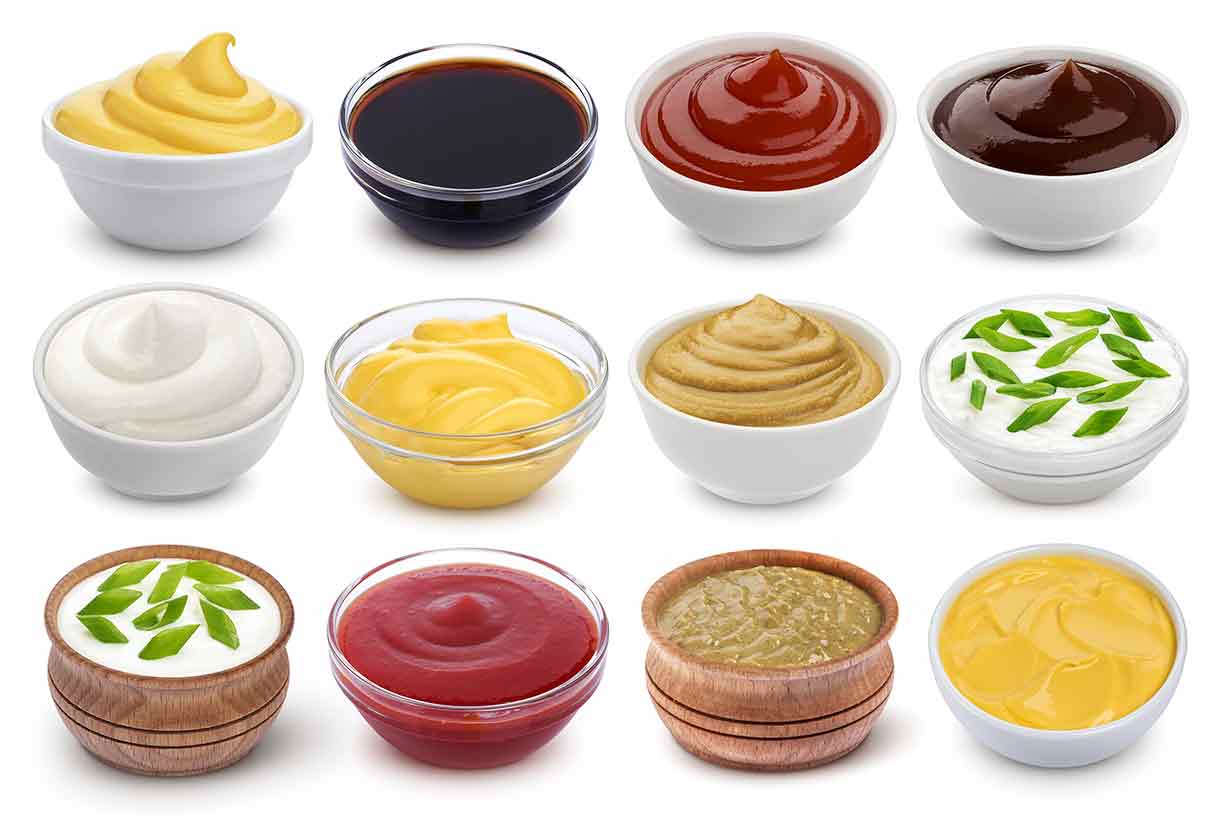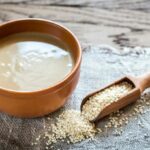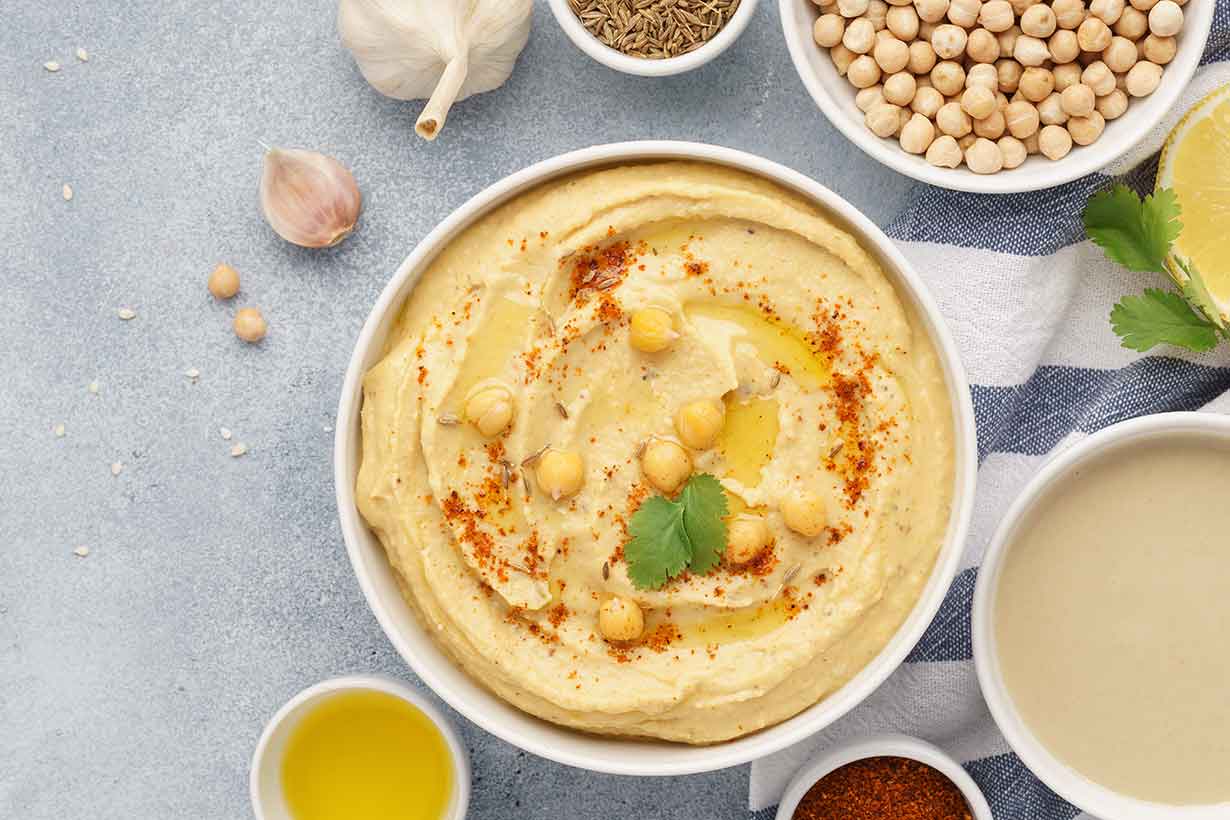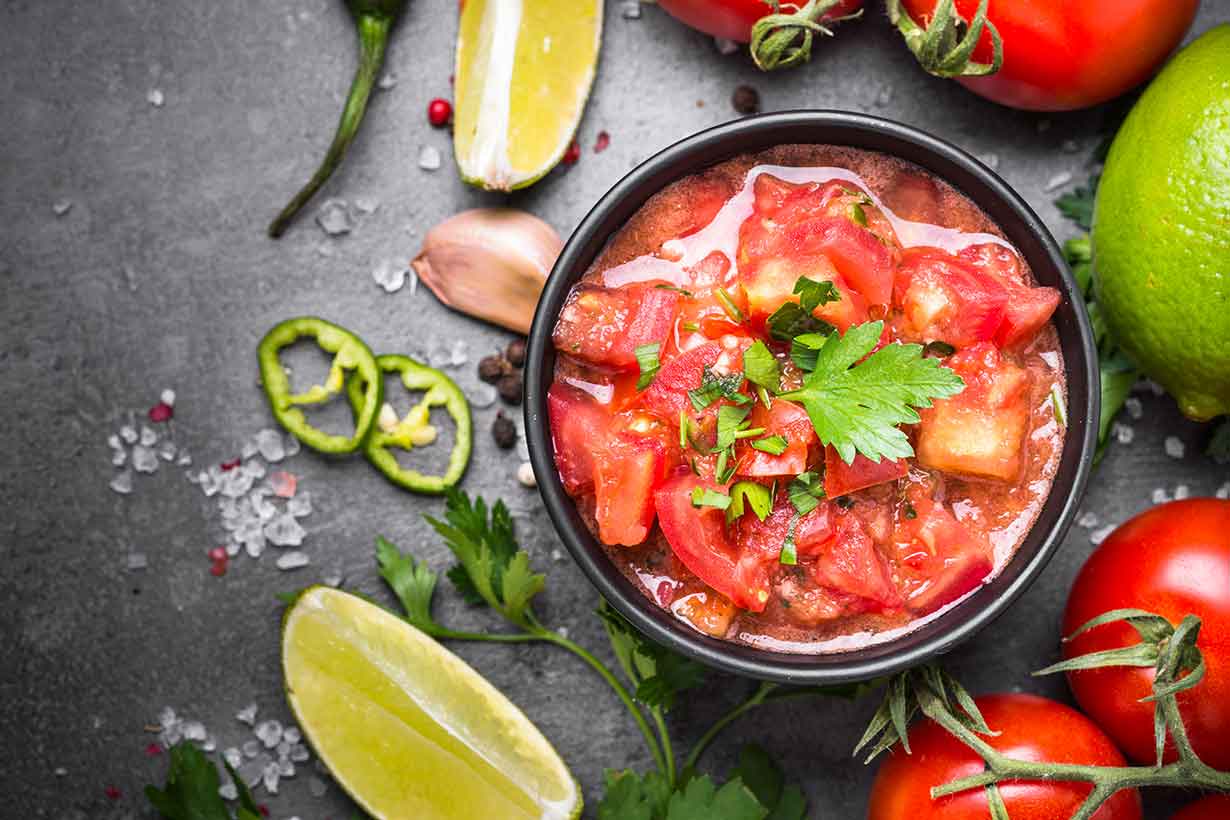Over the past decade or two, guacamole—and avocados in general—have seen a rapid surge in popularity.
Traditionally used as a flavor-enhancing condiment in Mexico, guacamole is made from the fruit of an avocado.
But is guacamole a healthy choice, what nutritional benefits does it offer, and how does it compare to whole avocado fruit?
This article examines the nutritional composition of guacamole, its potential impacts on health, and recent findings from scientific research.
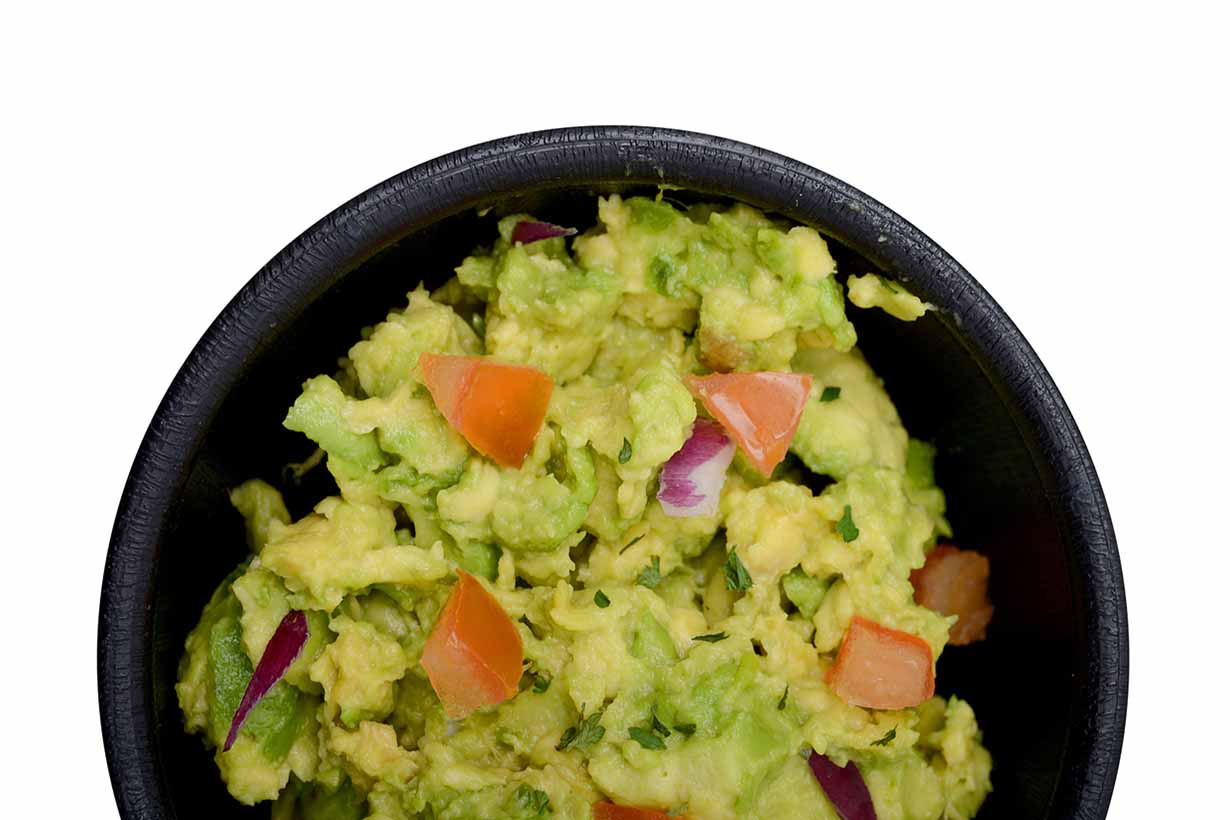
Table of contents
- What is Guacamole?
- What is the Nutritional Profile of Guacamole?
- What Are the Potential Health Benefits of Guacamole?
- Is Guacamole Fattening?
- How Does Guacamole Compare To Avocado Nutritionally?
- Does Guacamole Have Any Downsides?
- How To Keep Guacamole From Turning Brown
- How to Make Guacamole
- How Long Does it Last?
- Is Guacamole a Healthy Choice?
- References
What is Guacamole?
Guacamole, a traditional Mexican dish, involves mashing avocado fruit together with lime juice and salt. However, a variety of different guacamole recipes are available, incorporating ingredients ranging from tomatoes and onions to chilli peppers.
Written records highlight guacamole’s long history, with the earliest European account of the dish appearing in 1518. During this period, the condiment was popular among the upper class and earned the tag “midshipman’s butter” with British sailors (1).
However, it is believed that the first origins of guacamole trace back to the Aztecs, who created it in the 14th century (2).
In contrast to the vast majority of fruits, avocados are a rich source of dietary fat, which imparts guacamole with its smooth and creamy texture (3).
As with other fat-rich condiments like tahini, guacamole has gained global popularity over recent years.
What is the Nutritional Profile of Guacamole?
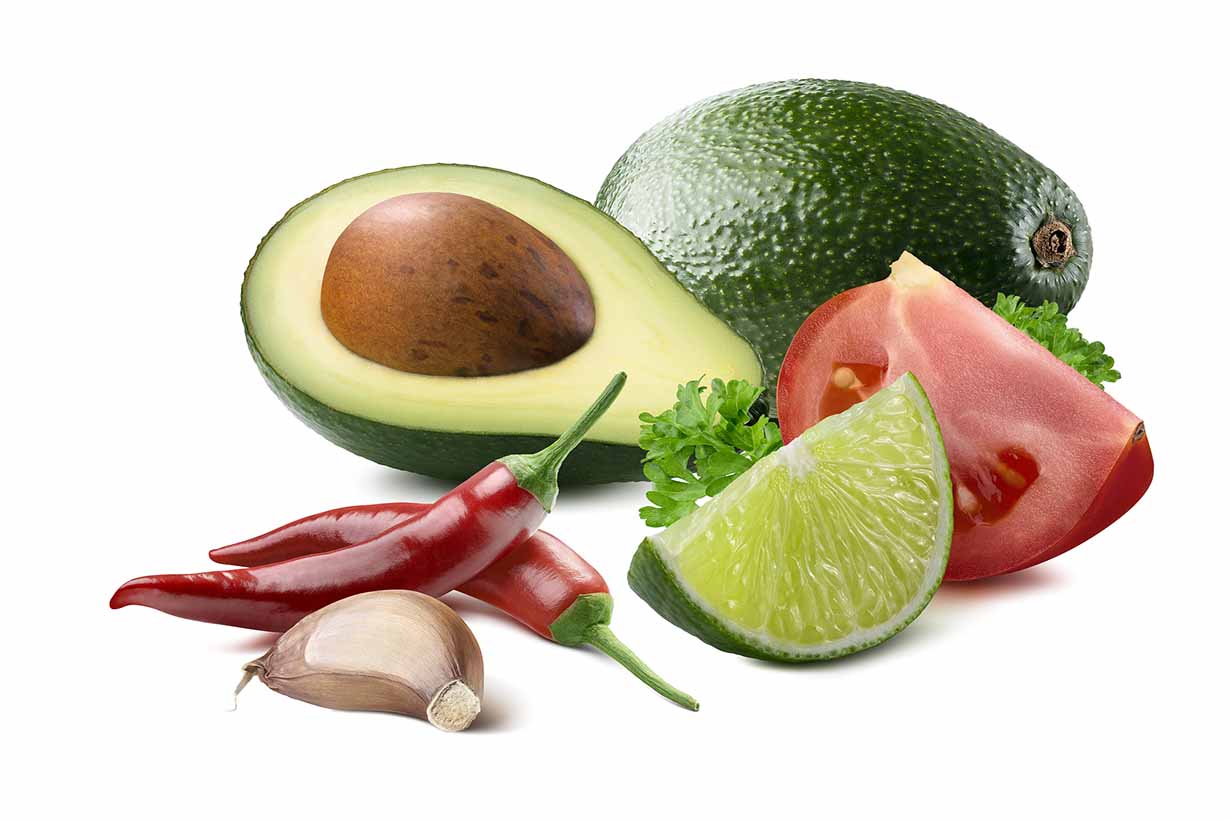
It is important to note that the precise nutritional profile of guacamole will depend on the particular recipe and ingredients used.
Since there are so many guacamole products and homemade recipes utilizing different ingredients, the nutritional values may vary.
That said, the following tables show the complete nutritional properties for a 70-gram portion of guacamole, derived from USDA data.
These nutritional values come from the USDA’s FoodData Central database. Daily values have been computed using USDA data in conjunction with the FDA’s recommended daily values (4, 5).
| Nutrient | Amount | % Daily Value |
|---|---|---|
| Calories | 102 kcal | |
| Carbohydrates | 5.66 g | 2.1% |
| Fiber | 4.27 g | 15.3% |
| Sugars | 0.61 g | |
| Fat | 9.17 g | 11.8% |
| Saturated | 1.33 g | 6.7% |
| Monounsaturated | 6.12 g | |
| Polyunsaturated | 1.14 g | |
| Omega-3 | 0.08 g | |
| Omega-6 | 1.05 g | |
| Cholesterol | 0 mg | 0% |
| Protein | 1.31 g | 2.6% |
As the table indicates, a 70-gram serving of guacamole contains 102 calories.
It provides a high provision of fiber and dietary fat and has a minimal protein content.
Similar to olive oil, avocados (and consequently guacamole) are a rich source of a fatty acid called oleic acid.
Oleic acid is a monounsaturated fatty acid often referred to as being “heart healthy” (6, 7, 8).
Vitamins
| Vitamin | Amount | % Daily Value |
|---|---|---|
| Choline | 9.31 mg | 1.7% |
| Folate, DFE | 51.8 mcg | 13.0% |
| Vitamin A, RAE | 7 mcg | 0.8% |
| Vitamin B1 (thiamin) | 0.044 mg | 3.7% |
| Vitamin B2 (riboflavin) | 0.083 mg | 6.4% |
| Vitamin B3 (niacin) | 1.12 mg | 7.0% |
| Vitamin B6 | 0.166 mg | 9.8% |
| Vitamin B12 | 0 mcg | 0% |
| Vitamin C | 7.35 mg | 8.2% |
| Vitamin D | 0 mcg | 0% |
| Vitamin E | 1.32 mg | 8.8% |
| Vitamin K | 13.5 mcg | 11.3% |
As this table shows, a 70-gram serving of guacamole provides a good source of folate, B vitamins, vitamin E, and vitamin K.
Minerals
| Mineral | Amount | % Daily Value |
|---|---|---|
| Calcium | 8.4 mg | 0.6% |
| Copper | 0.122 mg | 13.6% |
| Iron | 0.364 mg | 2.0% |
| Magnesium | 18.9 mg | 4.5% |
| Phosphorus | 34.3 mg | 2.7% |
| Potassium | 318 mg | 6.8% |
| Selenium | 0.28 mcg | 0.5% |
| Sodium | 222 mg | 9.7% |
| Zinc | 0.413 mg | 3.8% |
Guacamole offers high levels of copper and sodium as well as moderate amounts of magnesium and potassium.
What Are the Potential Health Benefits of Guacamole?
One notable benefit of guacamole is the package of fiber, fat, vitamins and minerals that it provides.
However, findings from scientific research suggest some more specific potential benefits of consuming guacamole.
In the following sections, we will summarize these research findings and delve into guacamole’s potential health effects.
Heart Health & Cardiovascular Disease Risk Factors
The unsaturated fatty acids present in guacamole, such as oleic acid, are thought to be beneficial for heart health.
In this regard, a systematic review and meta-analysis published in 2023 examined the effect of avocado intake on cardiovascular disease risk factors. This extensive review analyzed data from randomized controlled trials and demonstrated that (9):
- Individuals following a diet including avocado had reduced cholesterol and LDL cholesterol (LDL-C) in comparison to control groups adhering to habitual or low-fat diets.
- The ‘avocado diet’ had minimal or no impact on blood pressure, fasting glucose, and triglyceride levels.
Elevated LDL-C levels are associated with an increased risk of cardiovascular disease and cardiovascular events (10, 11, 12, 13).
Therefore, if guacamole can contribute to lower LDL-C levels while other health markers remain the same, this would be expected to decrease cardiovascular risk.
Another extensive systematic review and meta-analysis, published in 2024, analyzed data from ten studies. One of these was a large observational study involving 55,407 participants, and nine were randomized controlled trials.
This systematic review demonstrated that, compared to control groups, participants consuming avocado had little difference in LDL-C levels. However, subgroup analysis revealed a significant reduction of LDL-C in individuals with existing high cholesterol (14).
Potential For Lowering Blood Pressure
High blood pressure, commonly referred to as hypertension, is strongly associated with adverse health outcomes, including a higher risk of cardiovascular disease, stroke, and frailty (15, 16, 17).
However, dietary and lifestyle choices can have a significant influence on blood pressure levels.
In this regard, a 2023 systematic review and meta-analysis of observational studies examined the relationship between various fruits and vegetables and the risk of hypertension.
This review found that avocado, the primary ingredient in guacamole, was associated with a lower risk of developing hypertension (18).
A plausible mechanism for this effect is that high intakes of fiber and potassium consistently correlate with lower blood pressure levels (19, 20, 21, 22).
Since avocados boast high fiber and potassium content, the same holds true for guacamole.
However, it is worth being aware that guacamole can sometimes be very high in salt, dependent on the specific product and recipe.
Since a high sodium intake can elevate blood pressure, whole avocados may be a preferable choice in this regard.
Potential Cognitive Benefits
A 2021 analysis of data from the National Health and Nutrition Examination Survey, 2011-2014, examined the correlation between avocado and guacamole intake and cognitive function among older adults.
The study demonstrated that among older adults aged 60 and above, consumers of avocado and guacamole exhibited “significantly better cognitive scores across all cognitive tests and the global cognition score” (23).
Is Guacamole Fattening?
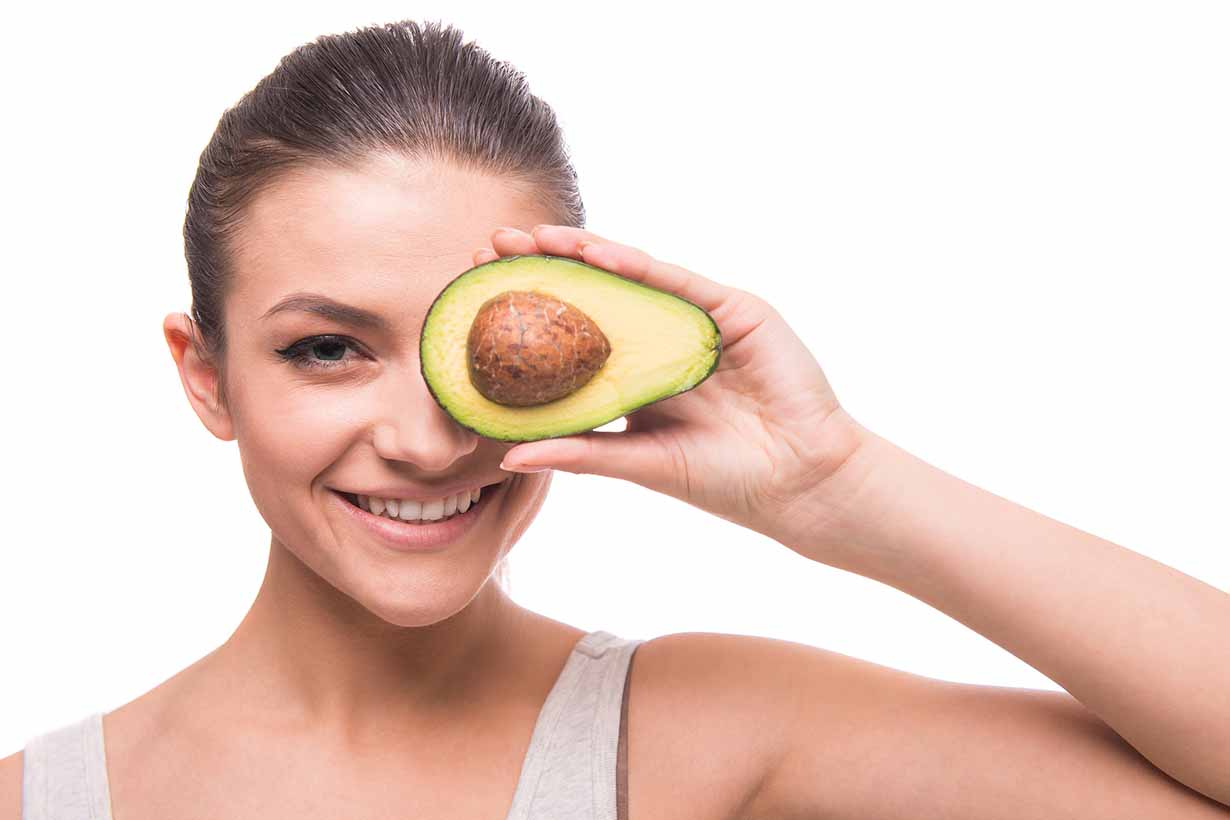
Some people may wonder whether guacamole is “fattening” due to its high calorie and fat content.
Firstly, it is important to point out that as part of a well-formulated diet, it is possible to eat high-calorie and high-fat foods without experiencing weight gain. This is simply because the overall dietary pattern is what matters most.
That being said, some studies indicate that avocados have properties that could help mitigate hunger cravings. For example, a randomized controlled trial found that eating half of an avocado during lunch prolonged satiety and decreased the desire to eat at 3 and 5 hours post-meal (24).
Perhaps more importantly, a systematic review and meta-analysis of eight randomized controlled trials examined the data on avocado intake and weight loss.
The findings of this review indicated that avocado interventions led to no significant changes in body weight or body mass index. Therefore, while avocado intake did not lead to weight loss, it didn’t promote weight gain either (25).
Aside from avocado, the other ingredients in guacamole wouldn’t be expected to have any distinct impact on weight management.
How Does Guacamole Compare To Avocado Nutritionally?
The following table shows the basic nutritional composition of avocado and guacamole per 100 grams.
Nutritional data has been sourced from the USDA’s FoodData Central database (4, 26).
| Nutrient | Avocado | Guacamole |
|---|---|---|
| Calories | 160 kcal | 145 kcal |
| Carbohydrates | 8.53 g | 8.09 g |
| Fiber | 6.7 g | 6.1 g |
| Sugars | 0.66 g | 0.87 g |
| Fat | 14.7 g | 13.1 g |
| Saturated | 2.13 g | 1.9 g |
| Monounsaturated | 9.8 g | 8.74 g |
| Polyunsaturated | 1.82 g | 1.63 g |
| Omega-3 | 0.13 g | 0.11 g |
| Omega-6 | 1.67 g | 1.5 g |
| Cholesterol | 0 mg | 0 mg |
| Protein | 2 g | 1.87 g |
| Sodium | 7 mg | 317 mg |
As depicted in the table, there is minimal disparity between avocado and guacamole regarding their nutritional composition.
However, the primary contrast between the two is their sodium content, since guacamole typically contains a high amount of added salt.
Thus, apart from the sodium content, the nutritional profile of most traditional guacamole closely resembles that of whole avocado.
Does Guacamole Have Any Downsides?
While guacamole is a moderately nutrient-rich condiment, it can also have some nutritional drawbacks.
High levels of sodium
The main consideration revolves around its relatively high sodium content, considering that most individuals consume more than the recommended sodium intake.
On this note, the average sodium consumption in the United States exceeds 3,400 mg daily, whereas dietary guidelines advise a limit of 2,300 mg (27).
Excessive intake of sodium, and a high sodium to potassium ratio, can lead to elevated blood pressure levels (28, 29, 30).
Since most people already consume too much sodium, opting for avocado instead of guacamole is a simple way to cut down on sodium.
Additional ingredients in non-traditional guacamole
It’s worth noting that not all guacamole products on store shelves will adhere to traditional guacamole recipes.
For instance, some of these products incorporate additional ingredients like vegetable oils, resulting in a higher-calorie product with diminished levels of oleic acid, fiber, vitamins, and minerals.
In this regard, it is important to check the ingredients label of guacamole products to see if the main ingredient is ‘avocado’ and whether oils have been added.
How To Keep Guacamole From Turning Brown
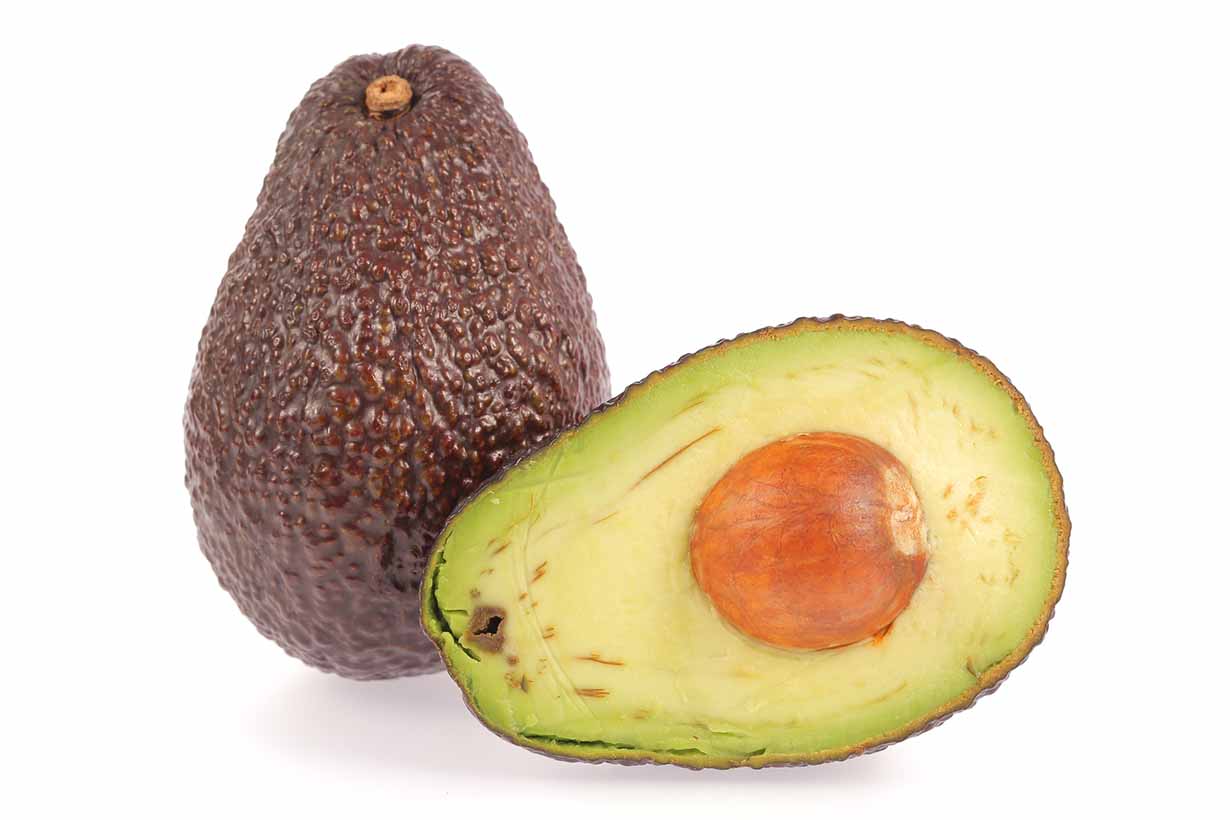
Another potential drawback of guacamole is enzymatic browning. This process begins when the avocado is cut, which exposes an enzyme inside the flesh called polyphenol oxidase to oxygen (31, 32).
When polyphenol oxidase reacts with oxygen and polyphenolic compounds in fruit, the phenolic compounds oxidize and turn into quinones. These quinones can facilitate the formation of melanin, which causes the flesh to brown (33).
This process is similar to the browning of banana flesh, particularly when it is squashed and bruised.
Unfortunately, this browning process can happen quite quickly when avocados are processed. While it does not mean the guacamole has gone bad and has no impact on taste, many people find brown bits in their guacamole unappetizing.
While there is no way to stop guacamole from turning brown, there are methods that can slow the process down:
- Incorporate a sufficient amount of lemon or lime juice to the guacamole. The heightened acidity slows down the enzymatic processes responsible for browning.
- An adequate amount of added salt will help due to salt’s role as a natural preservative.
- Since oxygen is necessary for the oxidation process, storing guacamole in an airtight container helps to prevent browning.
How to Make Guacamole
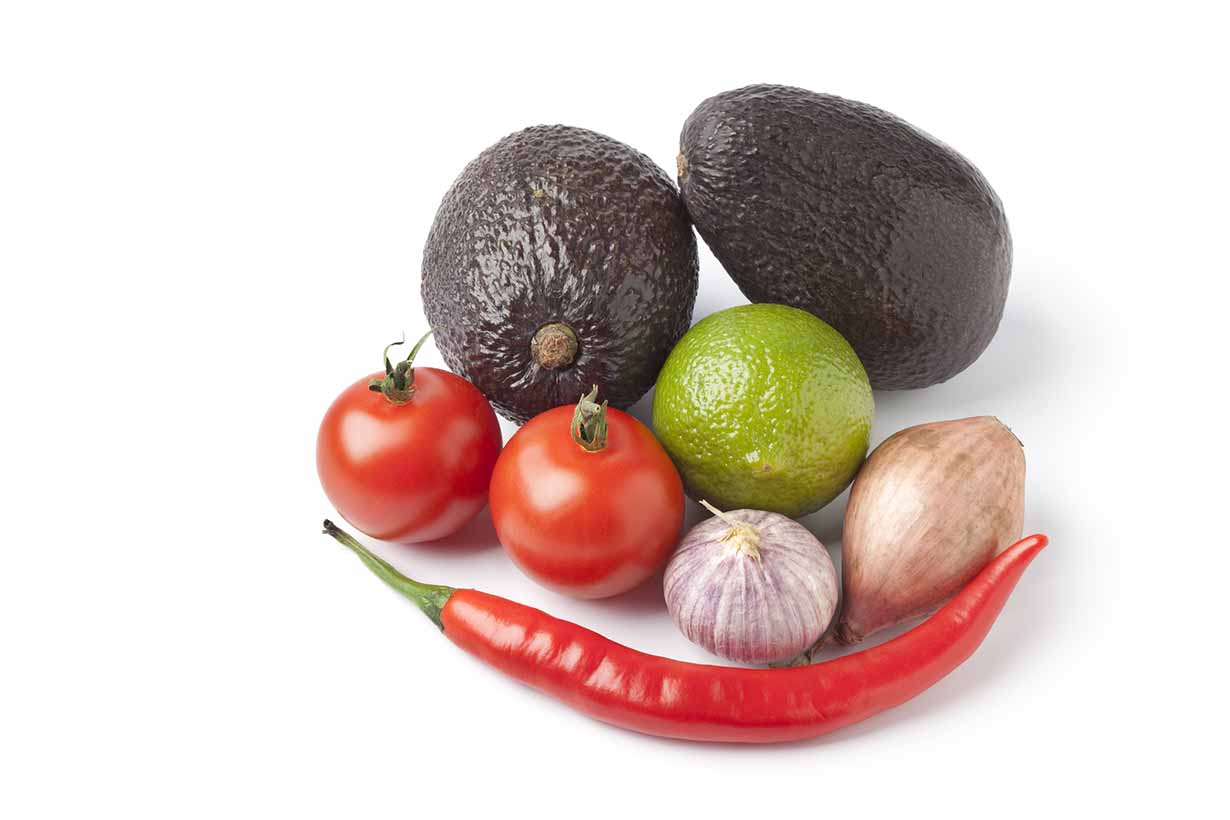
Of course, the idea of making your own guacamole may seem like a lot of hard work if you’ve never tried before, but it is quite simple.
At its most basic, you only need a few ingredients and about 5 minutes of preparation time.
Ingredients
- 2 Avocados
- 1/2 a lime
- Salt to taste
Simple Method
- First, mash the avocados.
- Next, squeeze the juice out of half of a lime into the mixture.
- Finally, add the salt and mix everything thoroughly.
Although this is just a basic and very simple recipe, you can easily adjust it to suit your taste. Some people like to add finely cut tomatoes and onions as well as herbs and seasonings like cilantro, basil, and black pepper.
For those who like a little more heat, just add a pinch of chili pepper for a spicy guacamole recipe.
How Long Does it Last?
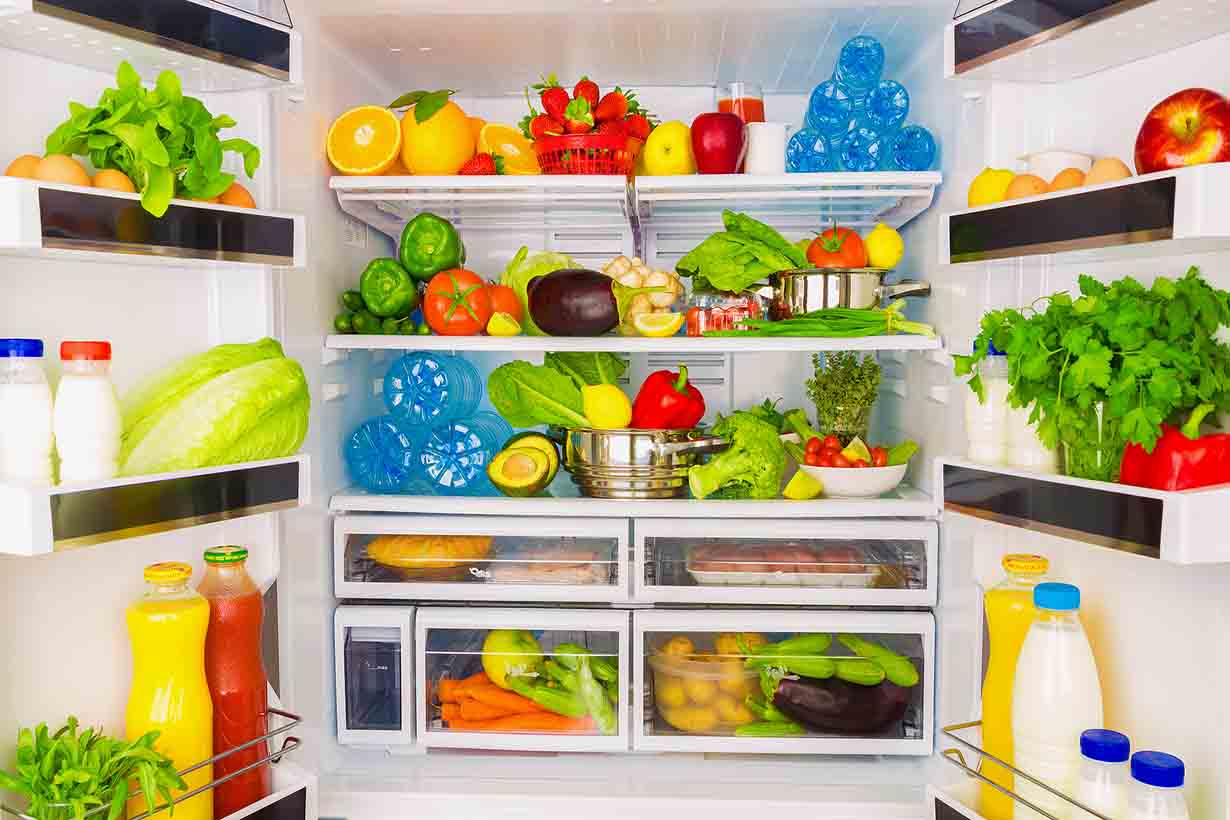
While a homemade guacamole recipe isn’t going to last for long, it can remain fresh for a day or two. This estimate is presuming it’s kept in an airtight container and stored before any oxidation begins.
As earlier stated, time is of the essence when storing guacamole; the less exposure to oxygen, the longer it will last.
In contrast, if you buy a store-bought guacamole then it can last for a week or two.
Is Guacamole a Healthy Choice?
Due to its high fat content, many people wonder whether guacamole is healthy or not.
However, the answer really depends on the type of guacamole, how much you eat, and the individual’s overall dietary pattern.
While simple homemade guacamole can be healthy, some products found in-store can be less nutritious. For one thing, many of these store-bought guacamoles have added ingredients such as soybean oil and very high sodium levels.
In contrast, a good homemade guacamole can be near to whole mashed avocado with a little salt for seasoning.
For individuals trying to cut down on their sodium intake, whole avocado would be a better choice than guacamole.
However, for individuals consuming a balanced diet with a moderate sodium intake, a traditional guacamole can be a healthy choice.
For more international side dishes, see this guide to the potential benefits of kimchi or this nutritional review of sauerkraut.
References
- https://norwalk.edu/thepantry/recipes/guacamole/
- https://avocadosfrommexico.com/guacamole/
- https://www.bhf.org.uk/informationsupport/heart-matters-magazine/nutrition/ask-the-expert/avocado
- https://fdc.nal.usda.gov/fdc-app.html#/food-details/2344802/nutrients
- https://www.fda.gov/food/new-nutrition-facts-label/daily-value-new-nutrition-and-supplement-facts-labels
- https://ajcn.nutrition.org/article/S0002-9165(22)03887-4/fulltext
- https://www.health.harvard.edu/blog/enjoy-avocados-eating-one-a-week-may-lower-heart-disease-risk-202204112725
- https://pubmed.ncbi.nlm.nih.gov/31616932/
- https://pubmed.ncbi.nlm.nih.gov/37525782/
- https://www.ahajournals.org/doi/10.1161/CIRCULATIONAHA.118.034273
- https://www.ahajournals.org/doi/10.1161/CIRCULATIONAHA.122.061010
- https://jamanetwork.com/journals/jama/fullarticle/2678614
- https://pubmed.ncbi.nlm.nih.gov/32052833/
- https://pubmed.ncbi.nlm.nih.gov/36565850/
- https://www.ncbi.nlm.nih.gov/pmc/articles/PMC6318510/
- https://www.bmj.com/content/370/bmj.m3222
- https://www.ahajournals.org/doi/full/10.1161/STROKEAHA.120.031945
- https://pubmed.ncbi.nlm.nih.gov/37106252/
- https://pubmed.ncbi.nlm.nih.gov/35449060/
- https://nutritionj.biomedcentral.com/articles/10.1186/s12937-023-00879-0
- https://www.ncbi.nlm.nih.gov/pmc/articles/PMC7429027/
- https://www.ahajournals.org/doi/10.1161/HYPERTENSIONAHA.123.20545
- https://pubmed.ncbi.nlm.nih.gov/34722611/
- https://nutritionj.biomedcentral.com/articles/10.1186/1475-2891-12-155
- https://pubmed.ncbi.nlm.nih.gov/35405602/
- https://fdc.nal.usda.gov/fdc-app.html#/food-details/171705/nutrients
- https://www.cdc.gov/salt/index.htm
- https://pubmed.ncbi.nlm.nih.gov/35246796/
- https://www.sciencedirect.com/science/article/pii/S216183132200597X
- https://pubmed.ncbi.nlm.nih.gov/34117485/
- https://www.tandfonline.com/doi/full/10.1080/10408398.2016.1175416
- https://www.ncbi.nlm.nih.gov/pmc/articles/PMC7355983/
- https://www.scientificamerican.com/article/fruits-gone-bad-discover-enzymatic-browning/

